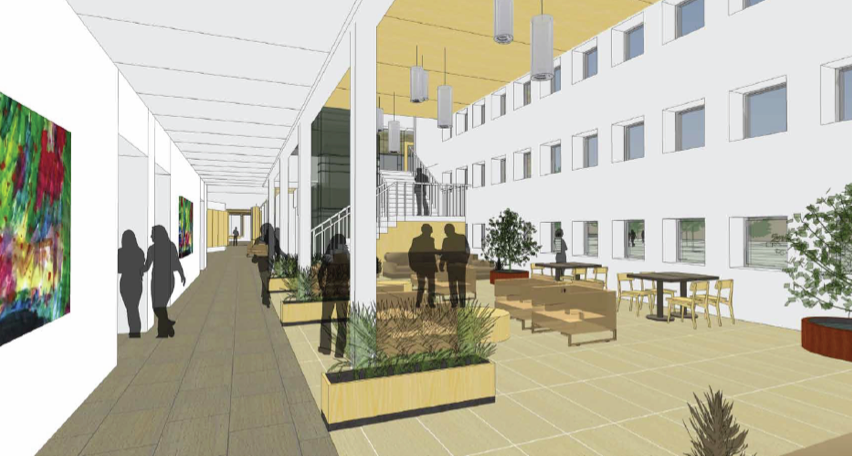The story of Anderson Hall, located on the east side of campus neighboring the Confer and Vickner academic halls, is quite extraordinary. It was built as a library in 1942 and had shelves covering the walls from top to bottom. The customary low ceilings made the building almost uninhabitable when it later turned into office space and classrooms for the Social Science departments.
When Gustavus opened the doors for the stateoftheart Beck Academic Hall in the fall of 2011, Anderson no longer filled a purpose.
Five years later, the building is getting more than just a facelift. The Education Department, which nomadically moved accross different buildings on campus, is finally getting a permanent home.
“The Education faculty is very excited to move into Anderson Hall. We use a lot of active and engaged learning in our courses, and we have students working in the hallway in our present building. In Anderson, we will have the space to engage our education majors in pedagogy that reflect what is happening in K12 schools. We will also have all faculty teaching in one building, which will enable us to collaborate more easily,” Department Chair for Education Deb Pitton said.
The enthusiasm is spread throughout the entire department. Junior Kristen Matthews shares Pitton’s excitement, and while she mentions that their phase in Mattson Hall, which her and her classmates currently share with the nursing department, wasn’t the worst, the belief is that the new building will add to the prestigious reputation the department already holds.
“It is humbling to be a part of a program that is so special and unique. The fact that we get to have a redone building is the icing on top of the cake. Mattson is cute and really homey but being in a new building will be so refreshing. The most exciting part is that we get to have a centrally located building that is focused on this major. I am also excited to be a part of the first class that actually gets to use this building. It is quite a legacy to have and I can’t wait to see what a new environment will do for this program,” Matthews said.
The significant renovation opens opportunities for other parts of the Gustavus community to move in as well. The Writing Center, the Center for Engaged Learning and the Multifaith Center will all be able to call the Anderson building their home once it opens in the spring.
The renovation, however, comes with a substantial price tag. The Vice President for Advancement at Gustavus, Thomas W. Young, helped secure the 8 million dollar funding that was necessary by reaching out to generious individuals whom keep Gustavus close to their hearts.
Also, because of the structure of the funding, Gustavus will have the benefit of not being indebted with loans once the reconstruction is completed.
“The President asked the Advancement Office to secure as much cash as possible to renovate Anderson. The engagement has been phenomenal throughout the community. Parental commitment, along with alumni and students have been vital to the fundraising campaign. Board members alone have raised $7,5 million towards the renovation. The Education program has been waiting. Now they are getting what they deserve,” Young said.
Young added that the construction is on time and that if everything goes according to plan, the students will be able to use the facilities when classes resume for the spring semester.
As stated previously, the possibilities for learning are expected to be great and Deb Pitton can not stress enough the enourmous potential this will bring to the school.
“Anderson will make it easier for students to work in a variety of partner and small group learning experiences. We will strengthen what we have already been doing by providing a more realistic environment for future teachers. Our elementary classroom will be a ‘model classroom’ that will contain spaces that reflect what you would find i in an actual elementary school including technology, ‘morning meeting’ space, and ageappropriate resources. Faculty and studentlead model lessons will also be easier to plan and present with more classrooms and student interaction rooms to utilize. We are also eager to share our common spaces with the campus at large, and we hope to provide opportunities for our partner schools to join us in learning events in the lovely atrium that will be a signature space in Anderson,” Pitton said.
